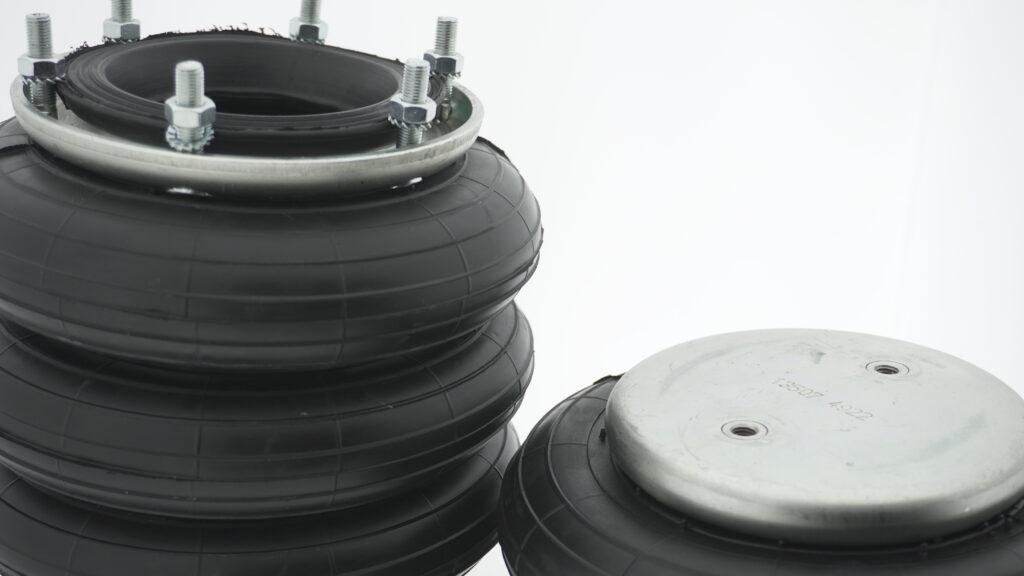
Air springs in autonomous vehicles offer a range of performance and comfort advantages essential for future mobility. Air springs in autonomous vehicles provide superior ride quality by adapting to different loads and road conditions automatically. Additionally, their ability to maintain constant vehicle height improves sensor accuracy, which is critical for self-driving technologies. Because smooth operation is vital for on-board systems and passenger experience, air springs play a key role in autonomous designs. Furthermore, air suspension systems reduce vibration impacts, protecting sensitive electronic components installed throughout autonomous vehicles. Along with improved stability, they support better energy management by minimizing rolling resistance under variable conditions. However, integrating air springs introduces challenges such as system complexity and maintenance requirements over long autonomous duty cycles. In addition, ensuring reliability without driver intervention demands even higher quality standards. Therefore, air springs in autonomous vehicles represent both an opportunity and a critical engineering focus for future transportation.
Advantages of using air springs for vehicle stability
One of the biggest benefits of using air springs in autonomous vehicles is enhanced stability across various driving conditions. Traditional suspension systems cannot adjust instantly to different road surfaces, but air springs do so automatically. As a result, vehicles remain level even when carrying varying passenger or cargo loads. This stability ensures that autonomous driving sensors, like LiDAR and cameras, maintain their calibrated positions at all times. Additionally, a stable platform allows more precise control of acceleration, braking, and steering actions. Less body roll during maneuvers also increases passenger comfort, an important consideration for future mobility services. Moreover, smoother rides reduce fatigue on structural vehicle components, improving durability. Especially in urban driving scenarios with constant speed changes, air springs optimize overall vehicle dynamics. Therefore, air springs significantly contribute to the safety, performance, and acceptance of autonomous vehicle technology in real-world applications.
Energy efficiency contributions from air springs
Energy efficiency is another important area where air springs in autonomous vehicles deliver measurable benefits. Because air springs adjust load distribution dynamically, they help maintain optimal tire contact with the road. Better contact minimizes rolling resistance, leading to improved fuel economy or extended battery range for electric vehicles. Additionally, adaptive height control allows vehicles to lower themselves at high speeds, improving aerodynamic efficiency. This translates into further energy savings, crucial for autonomous designs focusing on range maximization. Moreover, load leveling reduces uneven tire wear, lowering maintenance costs and environmental impact over a vehicle’s lifetime. In electric fleets, even small gains in efficiency scale up significantly across hundreds of vehicles. Advanced control systems paired with air springs make intelligent energy-saving adjustments in real time. Therefore, air springs not only enhance ride comfort but also play an essential role in achieving energy-efficient autonomous transport systems.
Challenges in implementing air springs for autonomy
Despite their advantages, implementing air springs in autonomous vehicles presents several engineering challenges. One major concern is the added complexity of integrating air management systems into already sensor-heavy vehicle architectures. Autonomous vehicles rely on massive amounts of data processing, and additional pneumatic systems increase the demand for real-time monitoring and control. Moreover, long-term reliability becomes a critical issue because human intervention may not be immediately available. Maintenance-free operation for extended periods must be ensured, requiring extremely durable materials and smart diagnostic systems. In addition, air spring failures could compromise critical autonomous functionalities like vehicle leveling or stability during emergency maneuvers. Weight considerations also play a role, especially in electric vehicles where battery weight is already significant. Therefore, while air springs offer major benefits, overcoming these technical hurdles is essential for successful integration into autonomous mobility solutions.
